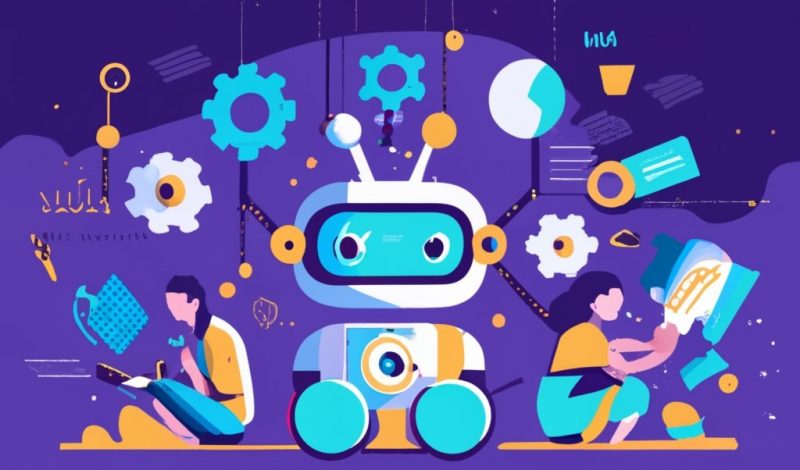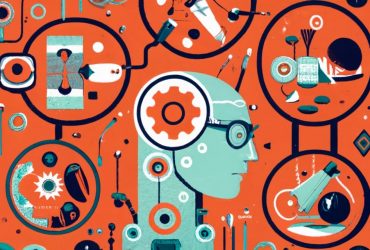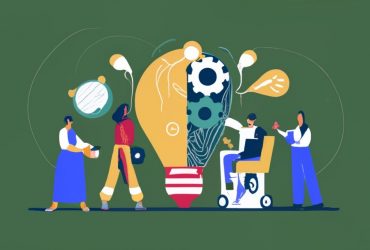The Unique Value of Artisanal Creations
In an age of mass production and artificial intelligence, handcrafted items provide a sense of human connection lacking in generic factory-made goods. Each artisanal piece bears the imprint of focused skill and labor by a single craftsperson or small workshop. Handmade artwork and decor feel special in a way that slick, perfect output from machines does not. As AI generation becomes more advanced, the handcrafted arts grow in emotional resonance and significance. They represent the continuity of humanity’s creative tradition in the face of increasingly pervasive technology.
AI-Powered Creativity: A New Frontier
Rather than fully automating artisans out of business, AI offers new frontiers of creative potential. Algorithmically-generated art, for example using generative adversarial networks, produces original images and designs no human could envision. These computational artworks inspire new ideas in human creators. Recommendation algorithms also suggest novel pairings of colors, textures and materials spurring experimentation. As an imaginative partner to people, artificial intelligence promises to radically expand the diversity and scope of handcrafted arts. AI delivers more raw creative fodder to the discerning minds and skilled hands of artisans.
Generative AI and Artisanal Inspiration
Generative adversarial networks represent an AI technique with particular relevance to artisanal creation. Two neural networks contest with each other – one generates new artifact designs while the other judges quality and originality. The output is an endless stream of unique concept art restricted only by the parameters of the input dataset. Jewelers, glassblowers, potters, woodworkers and other craftspeople can derive inspiration from the novel compositions created algorithmically. Generative AI introduces them to creative possibilities beyond normal human imagination. Rather than replace artisans outright, these tools enhance their ability to develop groundbreaking new styles and works.
| Application | Description |
| Design | AI generative algorithms create original designs, patterns and 3D models for artisans to base their creations on |
| Ideation | Neural networks recommend novel color schemes, material combinations and crafting techniques to spur human creativity |
| Creative Collaboration | Humans and AI systems work together interactively to ideate and iterate on craft designs in real time |
Human-AI Co-Creation in Artisanal Practices
Collaborative creation between artisans and AI represents an emerging trend set to reshape handicrafts. Rather than fully automated mass production, humans remain integral curators in the creative process while tapping exponential computational abilities. Interactive ideation sees neural networks generate endless creative variations for jewelers to judge and select the most promising. Metal workers design executables for robotic arms to shape hot material with enhanced precision. The result is handmade wares imbued with digitally-enabled intricacy. Blending the subjective taste of master craftspeople with lightning-fast technical ideation of algorithms points toward an artisanal renaissance fusing the best of both human and artificial design intellect.
Ethical and Legal Considerations in AI-Enhanced Artisanal Practices
While promising, the growing role of AI in a traditionally human-centric domain like artisanal craftsmanship necessitates caution around ethics and rights. As generative tools permeate creative industries, questions around attribution and compensation emerge. Additionally, policy measures should ensure professionals in creative fields can still earn viable incomes as automation and co-creation with AI reshape workflows. Updating legal frameworks to account for algorithmic creative influence represents crucial supporting infrastructure enabling artisans to fluidly leverage AI while retaining hard-won reputations, ownership of output and financial stability.
The Democratization of Artisanal Creativity
Historically, mastering intricate artistic crafts required long apprenticeships and innate talent – opportunities restricted only to the dedicated and gifted few. The influx of assistive AI technologies promises to democratize access to advanced creative practices once gatekept by skill and scarcity. Through intelligent tutorial systems and adaptive guidance, those lacking raw talent are empowered to achieve quality results and personal fulfillment through artistic self-expression. Democratized digital craft tools lower barriers for marginalized communities to participate in cultural creation based on their unique voices. AI thus could diversify the creative ecosystem. However, care must be taken to avoid homogenous cookie-cutter algorithmic art eclipsing regional styles and community identities.
AI-Enabled Innovation in Handmade Crafts
Rather than solely enhancing existing methodologies, AI systems spur breakthough innovations within artisanal domains as well. Human designers partnering with algorithms birth entirely new production techniques, smart materials and creative possibilities. Take glass blowing – computer vision tracks thermal flow while a robot arm twists molten material with torque beyond human capability. The resulting vessels possess previously impossible filigree meshes. Meanwhile, machine learning helps ceramicists formulate reactive glazes changing patterns in response to light exposure. And knitters utilize fractal geometry algorithms to design sweaters self-assembling from Programmable yarn. Cross-pollinating AI with traditional crafts will drive more wondrous artistic innovation.
Empowering Artisans with AI Tools
AI promises to democratize the means for artisanal excellence by expanding capabilities for creators at all skill levels. Beginners can leverage intelligent tutorial systems using computer vision and natural language processing to provide real-time feedback as they learn new techniques. Generative design algorithms empower hobbyists to create complex artifacts matching masters. Meanwhile professionals integrate things like tiny supervised robot arms to add staggering detail to works. And aged artisans unable to manipulate fine tools get a renewed lease on their craft using smart assistants. Democratized access to advanced methods could lower production costs as well. AI artisanal tools represent a rising tide lifting all ships across the creativity spectrum.
The Future of Artisanal Creativity: AI Integration
Current rapid advances in algorithmic art signal a future where generative AI, adaptive robotics and intuitive design software become standard in artisanal studios. Seamlessly interweaving digital intelligence with material creation will push craft excellence to new heights. Expect to see previously impossible feats like micro-scale atomized glazing, kinetically-morphing furniture from synthetic claytronics, stained glass with fractal complexity, and fabrics with 3D-printed weaves. We stand upon the cusp of an artisanal renaissance fueled by augmented tools and inspiration from artificial intelligence. The question artists must ask themselves going forward is no longer whether to integrate AI, but how best to do so with their unique creative goals in mind.
Conclusion: Embracing the Symbiosis of Artisanal Mastery and AI
In the dawning age of artificial intelligence, a symbiosis between algorithms and artisan represents the most fruitful path ahead rather than an oppositional dichotomy. Computational creativity systems offers exponential idea generation, super-human precision through robotics and unlimited technical optimizing unshackled by physical reality. Meanwhile human creators bring taste, meaning, emotional resonance, style and social/cultural dialogue. Those embracing this synergistic melding between artificial tools and learned craft stand to claim an artistic competitive edge and radically push creative boundaries in their chosen medium. By judiciously tapping algorithmic abilities, the future horizons of handmade excellence look scintillating indeed for discerning and adaptable artisans without abandoning heritage and humanity.
Frequently Asked Questions
How might AI impact perceptions around handcrafted goods vs mass production?
AI may increase appreciation for the human artistic touches in handcrafted goods contrasted with homogeneous machine-made products lacking individuality. Uniqueness and evidence of personal skill will grow more valued.
What are the main benefits AI offers to human artisans?
Key perks are less drudgery via automation, expanded creative options through generative algorithms, capabilities boosted by precision robotics, and fluid digitally-enabled innovation in materials and designs.
What changes may AI drive in handicraft business models and intellectual property?
We may see collective studios where groups of allied artisans co-create with shared AI tools. Smart contracts paying out micropayments per algorithm contributions could be implemented. Standards around attribution and IP for hybrid human-AI creations will need developing.
Could AI ever fully replace human creatives in producing handmade goods?
It’s unlikely since human aesthetic judgment, cultural embeddedness, emotional resonance, and quality control through mastery remain difficult to replicate artificially currently. However automation may displace those leaning more craftsman than creative visionary.
What are some promising innovations in AI for artisanal creation?
Areas like procedural generation, smart materials, computer vision process refinement, exquisite detail nanofabrication through robotics, AR-assisted technique learning, and rapid customization through adaptive algorithms demonstrate the transformative promise of AI.
How can artisans future-proof their career by embracing AI?
Mastering co-creative human-AI collaboration, continuously learning emerging generative/assistive tools applicable to one’s craft, focusing more on conceptual creativity while automating rote production, and branding around human ingenuity fused with tech represent solid preparation strategies.



